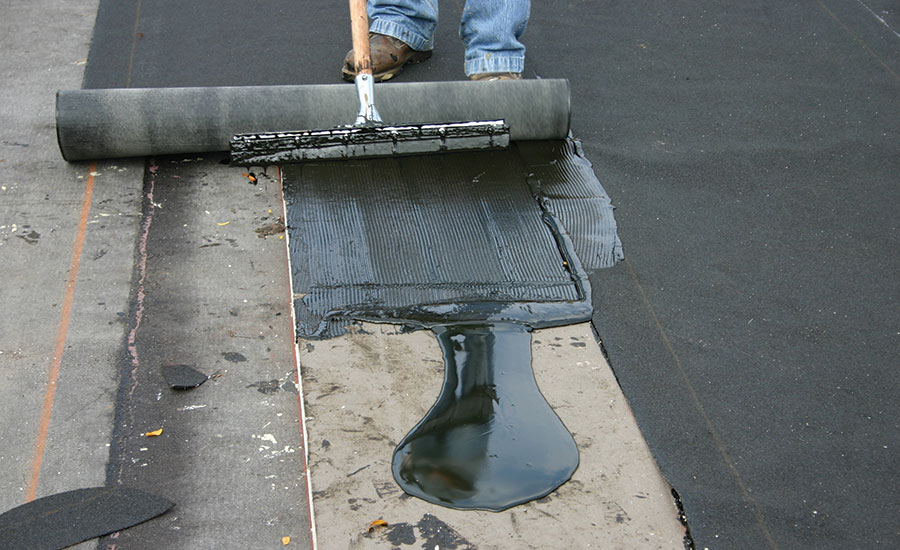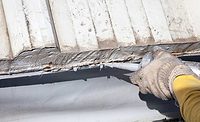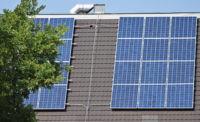As stated in the third chapter of Ecclesiastes and sung by the Byrds, “To everything there is a season.” For roofing adhesives today, the roofing industry has entered a new season that may or may not relate to the actual seasonal weather conditions we face on the roof. As concerns about air quality have grown, governments have introduced new regulations to reduce ground-level ozone that leads to smog formation in the atmosphere directly above urban areas. Although much of this ozone may be attributed to the smokestacks of factories and the tailpipes of automobiles, a measurable portion of ground-level ozone is produced by volatile organic compounds (VOCs) used as solvents in paints and adhesives. As a result, regulations restricting the amount of VOCs allowed in construction coatings and adhesives have spread across the United States.
In order to adapt to VOC regulations, roof system manufacturers have developed new generations of adhesives that require little or no VOC content. Some of these adhesives rely on a high-solids content, while others use one- or two-part urethanes to reduce or eliminate the need for VOCs. But the majority of new formulations substitute water for most of the high-VOC solvents previously used in roofing adhesives. Adhesives have always been affected by weather conditions, but today’s water-based roofing adhesives are much more sensitive to weather than solvent-based adhesives used in the past. Application at low temperature and high humidity may be challenging, especially when outdoor conditions approach freezing or the dew point. In addition, water-based adhesives tend to use softer resins that are easier to dissolve; but these resins may lack the “legs” or strength of other polymers used with stronger organic solvents.
In my personal opinion, roof system manufacturers have made a significant effort to formulate low-VOC adhesives that minimize installation hassles and maximize long-term performance. However, the immutable science behind the H2O molecule makes it next to impossible to ever achieve the ease of use and window of application offered by traditional solvent-based adhesives. As a result, I thought it would be helpful to mention some of the best tips to minimize field problems with low-VOC adhesives.
Pick One. Every roofing adhesive is different, using different resins, different solvents and different modifiers. As a result, experience with adhesive “A” provides little assurance of success with adhesives “B” or “C.” The more you can stick with one or a few key roofing adhesives, the more useful experience your crews will gain, and the less likely problems will affect your roof installations.
Use Warm, not Cold Adhesive. Keeping adhesives in a conditioned warehouse or in a job-site hot box can only help during cold weather application. Warm adhesive will likely dry faster, and the initial “bite” of the adhesive to the membrane and the substrate may be stronger.
Look at the Hourly Weather Forecast. Be sure to look at both the expected humidity/dew point as well as ambient temperature. The drying of all adhesives is affected by both temperature and humidity and the more you know what to expect, the better prepared your crews will be to make the best of actual conditions.
Use the Power of the Sun. Schedule and coordinate adhesive application to take advantage of the sun to add heat to the roof substrate. This can be especially important for areas of the roof that receive direct exposure only at certain times of the day as the sun moves from east to west.
Have a Plan B. Be prepared for the possibility that job site conditions may not be suitable for successful adhesive application. If you can’t adhere the membrane or the flashings, do you have an alternative ready? For walls, maybe mechanical battens or termination bars can be added. For roof membranes, it may be possible to mechanically attach or add temporary ballast until conditions improve.
Although these tips won’t guarantee 100 percent success for applying roofing adhesives, the more you and your crews keep these tips in mind, the better your chances will be to make it through “the sustainable season of adhesives.”







